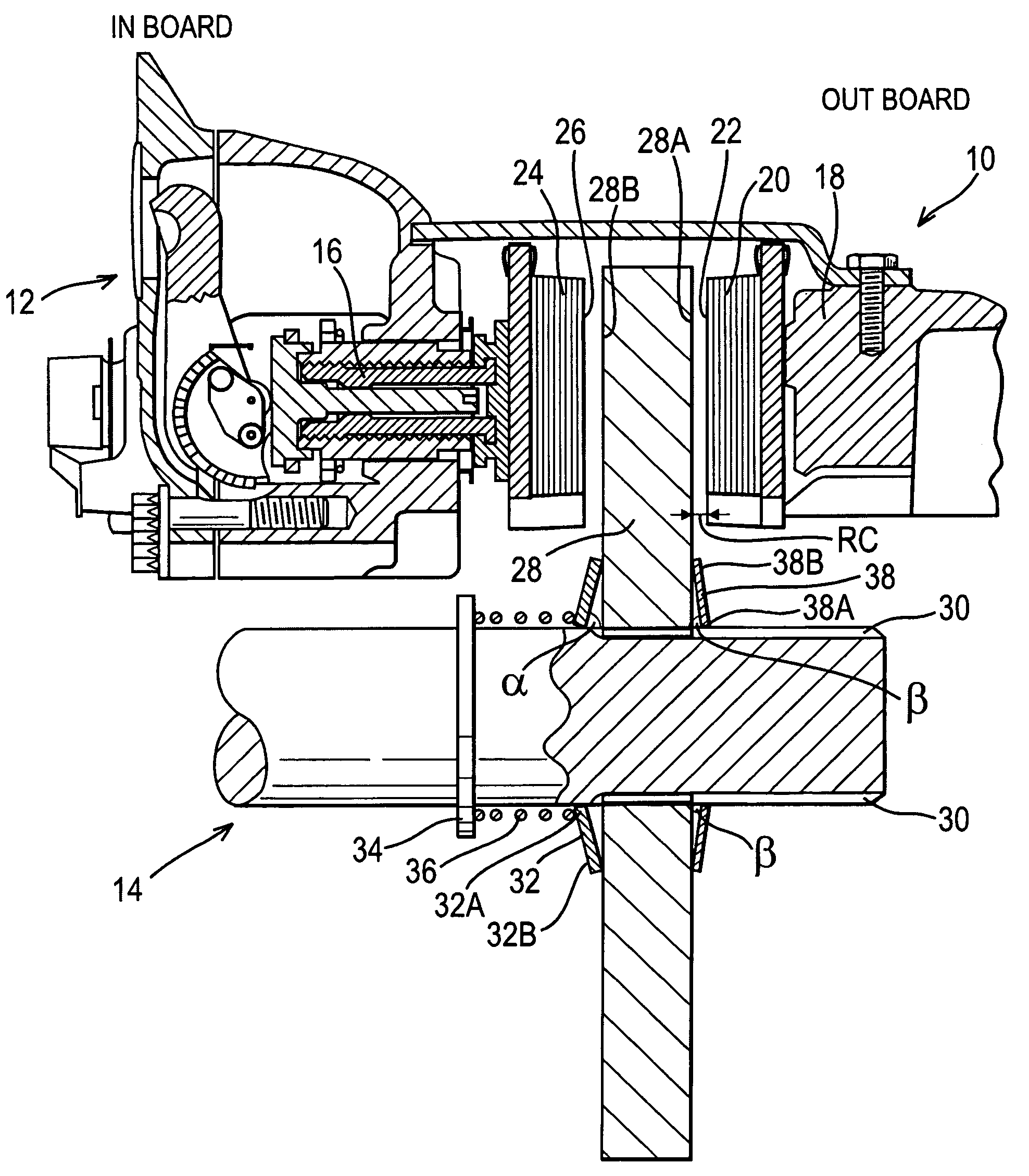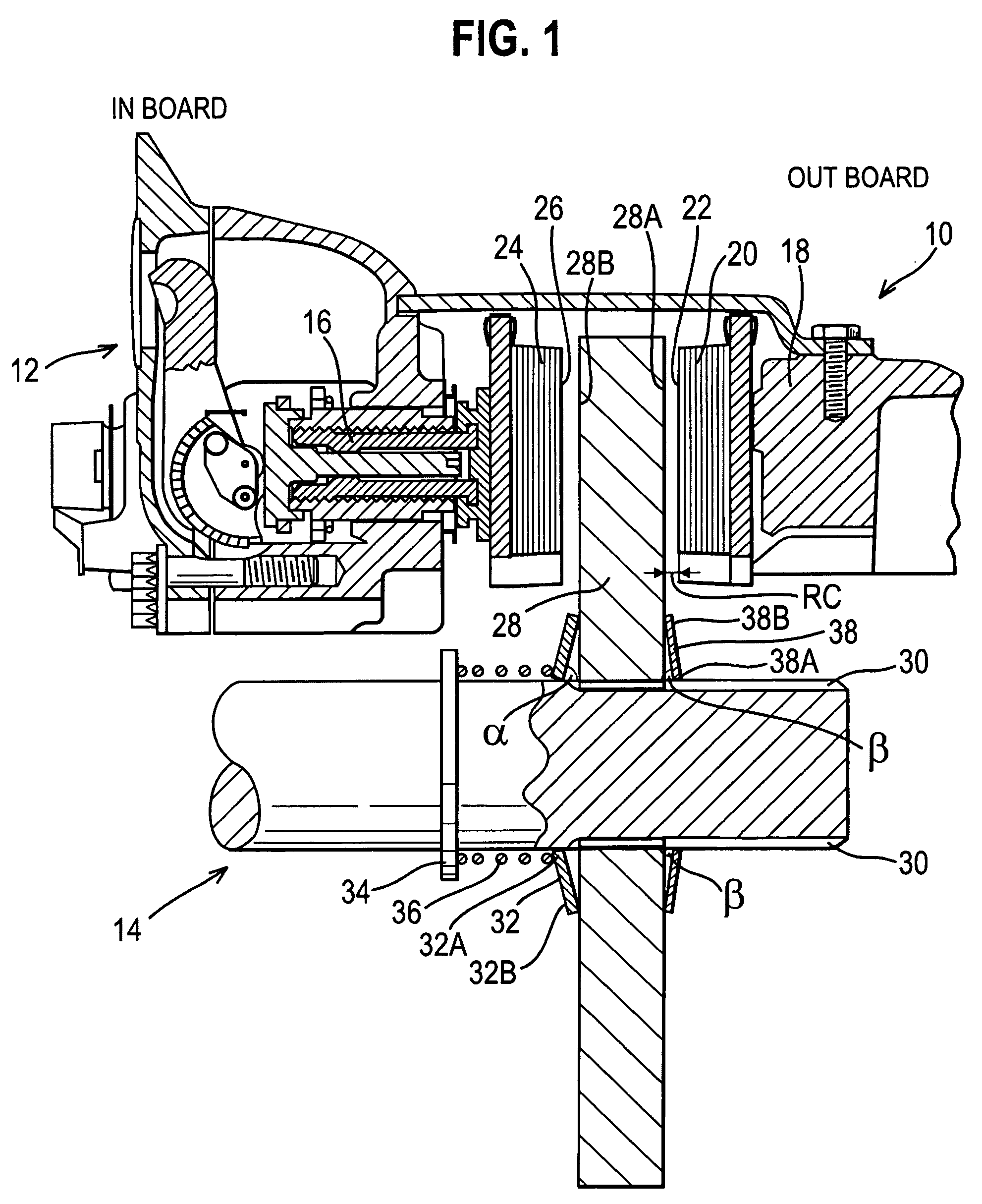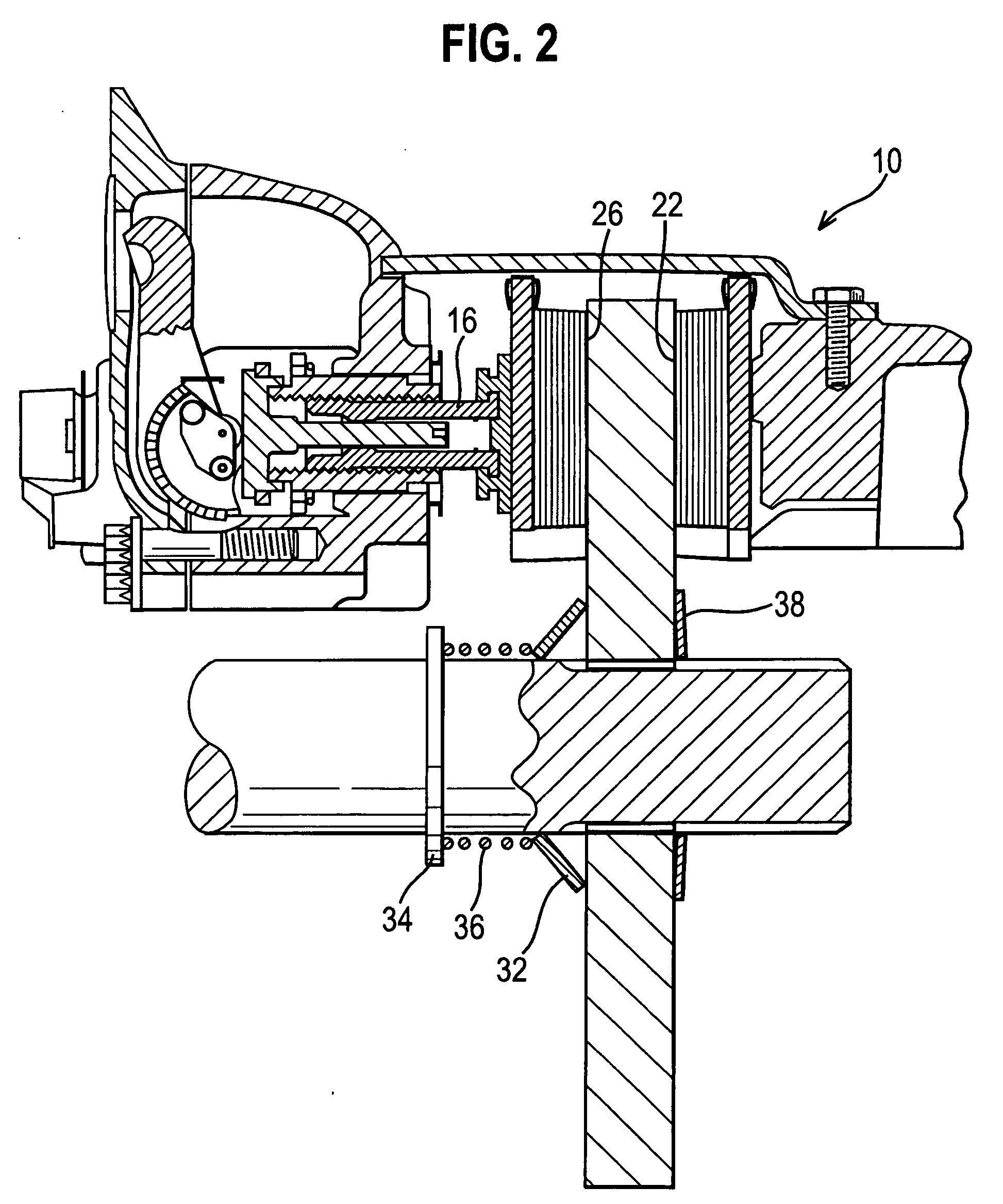Disc sliding mechanism
a disc sliding and disc technology, applied in the direction of brake discs, slack adjusters, braking elements, etc., can solve the problem of decelerating the connected wheel and consequently the vehicl
- Summary
- Abstract
- Description
- Claims
- Application Information
AI Technical Summary
Problems solved by technology
Method used
Image
Examples
second embodiment
[0048] brake disc system of 110 is shown in FIG. 5, with the brake applied. Substantially identical components which have substantially the same function as components in the brake disc system 10 are given corresponding reference numbers, except with a prefix of 1.
[0049] In FIG. 5, a brake disc 128 is shown in a brake position and is clamped between brake pads 120 and 124. The brake disc system 110 does not have an inner spragging device and instead includes a moveable sleeve 140 in contact with a first face 128A of the brake disc 128. A biasing spring 136 is disposed between the movable sleeve 140 and a fixed sleeve 134. When in a brake off position (not shown), movement of the brake disc 128 in the inboard direction is reduced by the biasing spring 136.
[0050] A positioning device (disc positioner) 142 is located on the outboard side of the brake disc 128 instead of an outboard spragging device. The positioning device 142 is slidable on a shaft 114 and contacts a first face 128A o...
fourth embodiment
[0069] A cross sectional view of part of a brake disc system 310 according to the invention is shown in FIG. 9. FIG. 9 illustrates the cross section of the interface between a moveable brake disc 328 and a shaft 314. Substantially identical components with substantially the same function as components in the brake disc system 10 are given the same reference number, but with a prefix of 3.
[0070] The moveable brake disc 328 has an inner surface 360 including a series of pairs of splines 362 located around a circumference. A gap 364 between each pair of splines 362 is larger than a gap between each of the splines 362 that make up each pair.
[0071] The shaft 314 has an outer surface including a series of shaft splines 366 that each cooperate with a corresponding pair of splines 362 on the brake disc 328. Complaint members 370 are located in the gaps 364 between the pairs of splines 362. The compliant members 370 are wedged between the brake disc 328 and the shaft 314, reducing any rotat...
fifth embodiment
[0083]FIG. 12 shows the interface between a brake disc 428 and a shaft 414 of a brake disc system 400. Substantially identical components substantially the same function as components in the brake disc system 310 are given the same reference number, but with a prefix of 4 instead of 3.
[0084] A compliant member 470 has a lower arm 472 and an upper arm 474 connected by a hinge 476 and a connecting portion 490. The two arms 472 and 474 are resiliently biased apart and have been partly compressed together to be inserted between the brake disc 428 and the shaft 414. Consequently, the complaint member 470 exerts a radial force on the brake disc 428.
[0085] The arms 472 and 474 of each compliant member 470 are located in similar or identical positions to the compliant members 370 and therefore the view shown in FIG. 9 applies to the brake disc system 400 also. A connecting portion 490 is substantially cylindrical and has a plurality of compliant members 470 attached at one end. As such, th...
PUM
 Login to View More
Login to View More Abstract
Description
Claims
Application Information
 Login to View More
Login to View More - R&D
- Intellectual Property
- Life Sciences
- Materials
- Tech Scout
- Unparalleled Data Quality
- Higher Quality Content
- 60% Fewer Hallucinations
Browse by: Latest US Patents, China's latest patents, Technical Efficacy Thesaurus, Application Domain, Technology Topic, Popular Technical Reports.
© 2025 PatSnap. All rights reserved.Legal|Privacy policy|Modern Slavery Act Transparency Statement|Sitemap|About US| Contact US: help@patsnap.com



